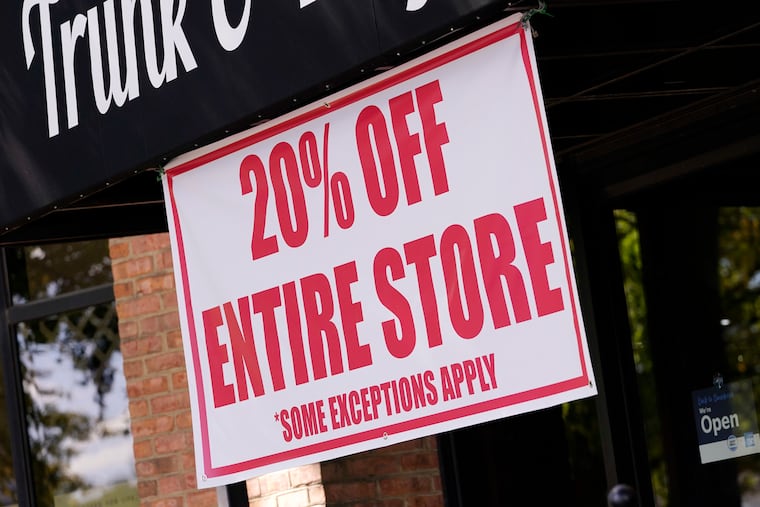What sole proprietors and freelancers need to know about scoring PPP loans
The rules have recently changed to make PPP funds even more accessible for small business owners.

Even if your “workforce” consists of you and your dog, you can still get a Paycheck Protection Program loan.
In fact, the rules have recently changed to make these funds even more accessible for you. So listen up, solo entrepreneurs, freelancers, self-employed people, “1099 contractors” and sole proprietors, here’s what you need to know.
Don’t don’t miss the deadline
The White House issued new rules last month that prioritized PPP funds for very small (fewer than 20 employee) businesses from Small Business Administration lenders. That period ends this Wednesday. But don’t be too concerned. As of this writing, almost half of the available PPP funds from December’s stimulus have yet to be spent. And $7 billion more is on the way, thanks to the new stimulus likely to receive final passage this week. So there’s money available. But you need to hurry. Despite pleas to extend the deadline, new applications are due through March 31.
More money is available
Maybe you don’t have an official “payroll.” That’s OK. To figure out how much forgivable funds are available, you’ll need to look at your federal Schedule C form from either 2020 or 2019. Up until the White House acted, you had to calculate the size of your requested loan based on the net income (line 31) on that form. But that amount was net of expenses, so it was pretty low for many.
But now you can calculate the loan based on your reported gross income (line 7), which is probably much higher. The calculation is 2.5 times your average monthly gross income for the year, but the gross income can’t exceed $100,000 annually. If you do have employees, you can include their wages, too, but you have to deduct the expenses reported on lines 14 (employee benefit programs), 19 (pension and profit-sharing plans), and 26 (wages — less employment credits) of Schedule C from your gross income.
You may have to wait.
You can apply for a first or a second PPP loan from your lender but you’ll have to wait at least eight weeks (the minimum forgiveness period) after the first loan has been approved to apply for the next one. Even if you got a loan using the older calculations, you can’t go back and change it until the minimum eight-week period is over. The American Institute of Certified Public Accountants is lobbying to have this rule changed. The good news it that your lender can help guide you through this process.
“I have found that the lenders involved regardless of the bank and its size have been exceptionally helpful,” said Robert Katz, a managing director at accounting firm EisnerAmper in Philadelphia. “Yes, you may have to sit on hold for a bit, maybe even longer, because of the sheer volume, but again, for the patience and the callbacks, the money received is without burden.”
The forgiveness rules are unchanged
Whether you’re self-employed or run a business with many employees, the process for applying for forgiveness remains the same. That means that if you have a loan for less than $150,000, you will have to show you spent the money on forgivable expenses. They include your “payroll,” payroll-related expenses, rent, utilities, interest and other operating costs during the coverage period, either 8 or 24 weeks. If you have a loan that exceeds $150,000, you will have to go through a more rigorous process with your lender.
You could face a review
The SBA is very sensitive to fraud, so if your loan is more than $150,000, then the agency can review your application and any supporting documentation. Keep your books up to date and be prepared to submit paperwork supporting your payroll and other expenses, if asked.
Be careful about taxes
If your PPP loan is completely forgiven, it will not be considered taxable for federal, Pennsylvania, New Jersey or Delaware purposes. Even the expenses you incur that you’re using for forgiveness will be deductible.
However, if you’re doing work or located in another state — such as Virginia, Ohio and Massachusetts — you may be subject to state taxes there.
Other sources for money
Even though you’re self-employed or have no employees, you may still be eligible for an Economic Injury Disaster Loan from the SBA. If you’re in the arts industry, you may be qualified for a Shuttered Venue Operators Grant, although you can’t participate in this program and the PPP program.
Also, a new grant program for the restaurant industry, called the Restaurant Revitalization Fund, may be available to you under the new stimulus bill. This is in addition to special grants for businesses in low to moderate income areas and grants for minority-owned businesses in the Delaware Valley.
Many self-employed entrepreneurs can qualify for these programs, but unfortunately several have hesitated because of the complexity.
“Anything when you are going through it a first time is confusing,” says Katz. “Imagine preparing your own tax return for the first time if you had no experience. But keeping in mind that the end goal is that you will ultimately receive a grant of substantial money that you don’t have to pay back, it is worth it.”